The American Southwest is dotted with small towns that brim with rich histories and unique cultures. These communities offer a glimpse into the past, showcasing stories of frontier life, mining booms, and Native American heritage. From the high deserts of Texas to the red rocks of Arizona, each town invites visitors to step back in time and experience the enduring spirit of the Old West. Whether you’re a history buff, an art enthusiast, or simply looking for an off-the-beaten-path adventure, these 15 historic small towns in the Southwest USA offer unforgettable experiences and insights.
15. Alpine, Texas: High Desert Beauty and Old-West Heritage
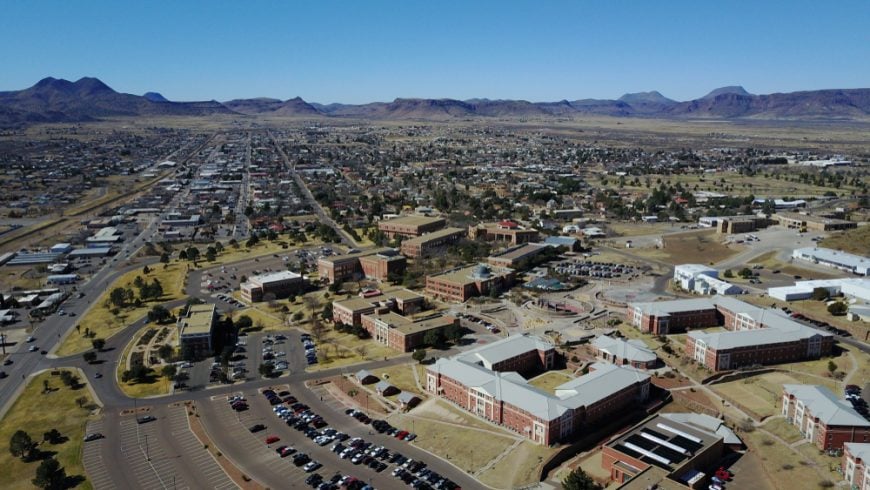
Nestled in the high desert mountains of West Texas, Alpine is a charming town that beautifully blends natural beauty with a rich Old-West heritage. With its historic architecture lining the streets, visitors can explore buildings that date back to the late 19th century, reflecting the town’s early days as a railroad community. The Museum of the Big Bend offers fascinating exhibits on the region’s history, including Native American artifacts and tales of early settlers. Alpine also serves as a cultural hub, hosting events like the Trappings of Texas art exhibit and the annual Texas Cowboy Poetry Gathering. Outdoor enthusiasts can enjoy nearby parks and scenic drives that showcase the stunning landscapes of the Big Bend region. Strolling through Alpine, you’ll find vibrant murals, local eateries, and shops that capture the essence of West Texas hospitality. For those considering a move, Alpine offers 3-4 bedroom homes ranging from $236,000 to $292,000, making it an attractive option for affordable high desert living.
Where is Alpine, Texas?

Alpine is located in the heart of the Big Bend region of West Texas, approximately 200 miles southeast of El Paso. Situated at the foot of the Davis Mountains, its high elevation provides cooler temperatures and breathtaking mountain vistas. This remote location adds to its charm, offering clear night skies perfect for stargazing—a highlight for visitors to the McDonald Observatory nearby. To reach Alpine, travelers can take U.S. Route 90 or U.S. Route 67, with the town also accessible via the historic Sunset Limited Amtrak route, making it a true gateway to the rugged beauty of West Texas.
14. Madrid, New Mexico: From Coal Mining to Cultural Mining
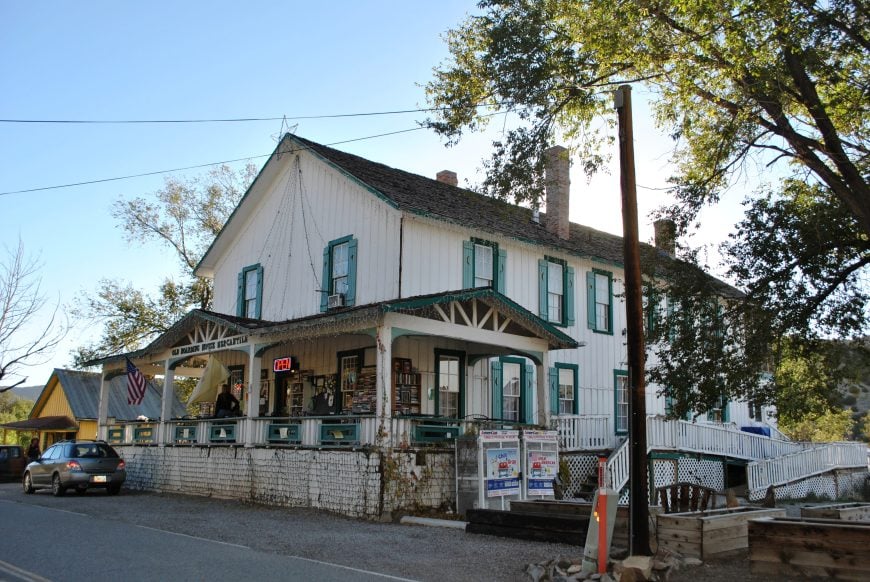
Once a booming coal mining town in the early 20th century, Madrid, New Mexico experienced decline before reinventing itself as a vibrant artistic haven. Abandoned for years, the town was revived in the 1970s when artists and free spirits were drawn to its rustic charm and affordable spaces. Today, Madrid’s historic buildings house eclectic galleries, unique boutiques, and cafés that reflect the creative energy of the community. The Mine Shaft Tavern, a relic from the mining days, offers live music and hearty fare, maintaining the town’s connection to its past. Visitors can explore the Coal Mine Museum to learn about Madrid’s industrial heritage or simply wander the colorful streets adorned with whimsical art installations. The town also celebrates its artistic spirit with events like the annual Christmas parade and holiday light displays that draw crowds from near and far. For those interested in settling down, 3-4 bedroom homes in Madrid range from $399,000 to $421,000, reflecting the town’s growing appeal and creative allure.
Where is Madrid, New Mexico?

Madrid is nestled along the Turquoise Trail National Scenic Byway, about halfway between Santa Fe and Albuquerque in New Mexico. Perched in the Ortiz Mountains, its high desert surroundings offer stunning vistas and a serene backdrop for this artistic enclave. The town’s proximity to these major cities makes it an accessible day trip or a charming stop along a scenic drive. Travelers can reach Madrid by taking State Highway 14, enjoying the journey through rolling hills and historic mining areas that add to the region’s allure.
13. Williams, Arizona: Gateway to the Grand Canyon with Route 66 Charm

Williams, Arizona is a quintessential small town that captures the spirit of vintage Americana, proudly nestled along the iconic Route 66. Its historic downtown is lined with classic diners, neon signs, and souvenir shops that transport visitors back to the heyday of the Mother Road. Known as the “Gateway to the Grand Canyon,” Williams offers a charming departure point for the Grand Canyon Railway, a scenic train ride that brings travelers to the South Rim of the Grand Canyon in style. The town hosts events like classic car shows and live music festivals, celebrating its deep-rooted connection to American road trip culture. Outdoor enthusiasts can explore nearby Bearizona Wildlife Park or take advantage of the surrounding Kaibab National Forest for hiking and camping. Whether you’re reliving the glory days of Route 66 or embarking on a natural adventure, Williams offers a nostalgic and inviting experience. Housing options include 3-4 bedroom homes priced between $400,000 and $600,000, catering to those drawn to its scenic and historic charm.
Where is Williams, Arizona?
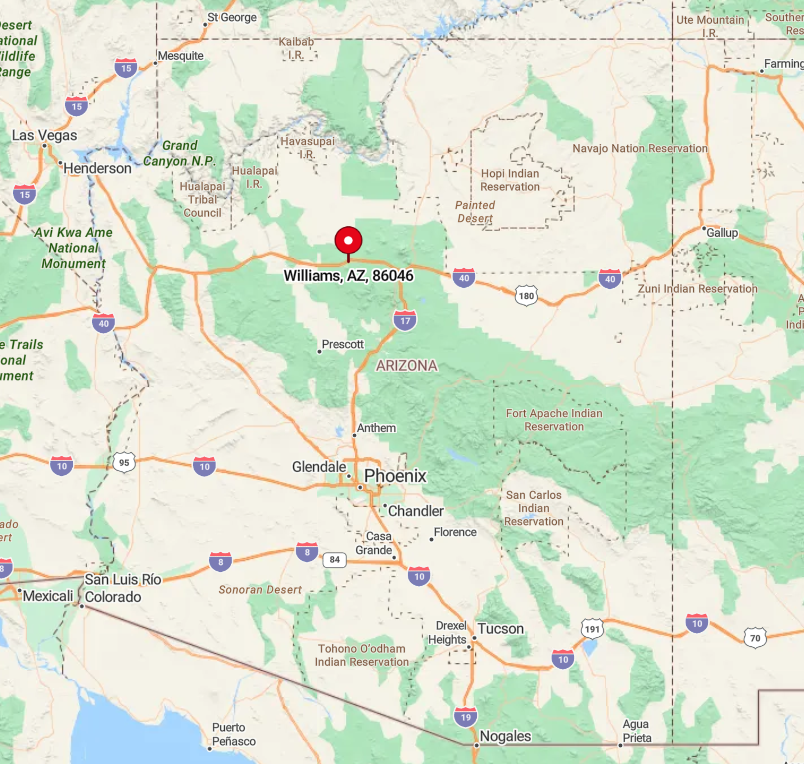
Situated in northern Arizona, Williams lies about 30 miles west of Flagstaff and 60 miles south of the Grand Canyon’s South Rim. The town sits at an elevation of approximately 6,800 feet, offering a cool alpine climate amid the pine forests of the Kaibab Plateau. Its strategic location along Interstate 40 and historic Route 66 makes it easily accessible for travelers exploring the Southwest. Visitors can reach Williams by car or via Amtrak’s Southwest Chief line, enjoying scenic vistas along the historic pathways that have connected this region for decades.
12. Fort Davis, Texas: Frontier Military Post Preserved in Time

Fort Davis, Texas offers a remarkable glimpse into frontier military life, standing as one of the best-preserved 19th-century fort sites in the United States. The Fort Davis National Historic Site encompasses restored buildings and ruins that once housed soldiers tasked with protecting emigrants, mail coaches, and travelers on the San Antonio-El Paso Road. Visitors can tour the barracks, hospital, and officers’ quarters, gaining insight into the daily lives of those stationed on the western frontier. The town itself retains historic charm with quaint shops and cafes housed in original adobe and brick buildings. Outdoor activities abound, with the nearby Davis Mountains State Park offering hiking, bird watching, and stunning views of the rugged landscape. Fort Davis also prides itself on dark sky preservation, making it an ideal spot for stargazing and astronomy enthusiasts. For families or individuals seeking a peaceful retreat, 3-4 bedroom homes in Fort Davis are available in the $300,000 to $500,000 range.
Where is Fort Davis, Texas?

Located in the Trans-Pecos region of West Texas, Fort Davis sits approximately 120 miles north of the U.S.-Mexico border. Nestled at the base of the Davis Mountains, it boasts some of the highest elevations in Texas, providing cooler temperatures and diverse ecosystems. The town is accessible via State Highway 17 and State Highway 118, connecting it to nearby communities like Marfa and Alpine. Its remote location contributes to its preserved historic ambiance and offers visitors a peaceful retreat amid the wide-open spaces of the Texas frontier.
11. Oatman, Arizona: A Living Ghost Town with Wild Burros

Perched in the Black Mountains of Arizona, Oatman is a living ghost town that transports visitors to the days of the Old West. Once a thriving gold mining community, Oatman now charms travelers with its preserved wooden sidewalks, historic buildings, and staged gunfights on Main Street. One of the town’s most endearing features is the herd of wild burros that roam freely, descendants of the pack animals used by miners in the early 1900s. These friendly burros eagerly accept snacks from visitors, adding a unique and delightful interaction. The town’s location along the historic Route 66 draws enthusiasts eager to experience a piece of Americana. Shops offering souvenirs, local crafts, and Route 66 memorabilia line the streets, preserving the nostalgic feel of a bygone era. Those considering this unique community will find 3-4 bedroom homes priced between $150,000 and $250,000, offering a rare blend of affordability and charm.
Where is Oatman, Arizona?
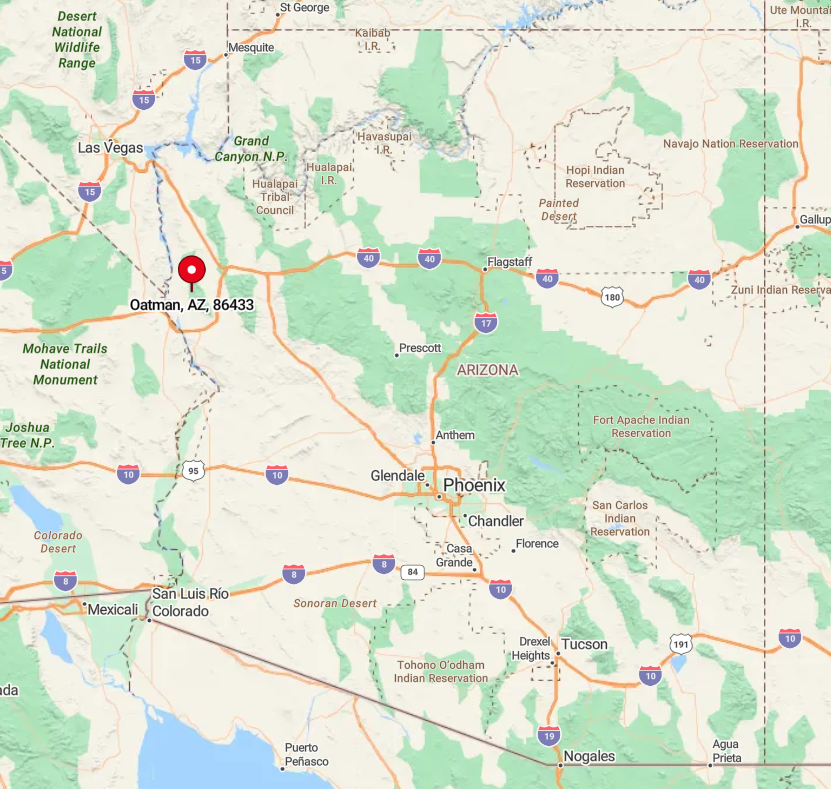
Oatman is located in northwestern Arizona, approximately 28 miles southwest of Kingman and 20 miles east of the Colorado River near the California border. The town is accessible via a winding stretch of historic Route 66, offering breathtaking views of the rugged desert landscape. The journey to Oatman is part of the adventure, with hairpin turns and scenic overlooks along the Sitgreaves Pass. Travelers driving from Kingman or Laughlin, Nevada can reach Oatman by following the well-marked route, enjoying a memorable drive through some of the Southwest’s most iconic scenery.
10. Lincoln, New Mexico: Home of the Lincoln County War

Steeped in Wild West lore, Lincoln, New Mexico is a small town that played a pivotal role in frontier history. It was the epicenter of the Lincoln County War, a violent feud in the late 1870s that involved infamous figures like Billy the Kid. The town is remarkably preserved, with many original structures intact, allowing visitors to walk the same streets where historic gunfights took place. The Lincoln Historic Site includes museums and buildings like the Old Lincoln County Courthouse, from which Billy the Kid made his legendary escape. Exploring Lincoln offers a tangible connection to the past, with interpretive exhibits that bring the stories of lawlessness and justice to life. The annual Old Lincoln Days festival features reenactments and celebrates the town’s colorful history. For those drawn to history and small-town charm, 3-4 bedroom homes in Lincoln are available for $200,000 to $400,000.
Where is Lincoln, New Mexico?

Lincoln is located in southeastern New Mexico, along U.S. Route 380, about 57 miles west of Roswell and 12 miles east of Capitan. Nestled in the scenic Bonito Valley, the town is surrounded by rolling hills and lush landscapes that contrast with the stark desert often associated with the Southwest. Its remote location contributes to the preserved state of its historical buildings, undisturbed by modern development. Travelers can reach Lincoln by car, enjoying a leisurely drive through the picturesque terrain that sets the stage for the town’s storied past.
9. Ajo, Arizona: Spanish Colonial Revival in the Sonoran Desert

Ajo, Arizona is a gem in the heart of the Sonoran Desert, known for its distinctive Spanish Colonial Revival architecture that sets it apart from other mining towns. Founded as a copper mining community, Ajo’s historic town plaza is framed by white stucco buildings with elegant arches and red-tiled roofs, reminiscent of a Mediterranean village. The Immaculate Conception Church and the Curley School are notable landmarks that showcase this architectural style. Visitors can explore the Ajo Historical Museum to learn about the town’s mining heritage and its transition over the years. The surrounding desert offers ample opportunities for exploration, including Organ Pipe Cactus National Monument, where unique flora and fauna thrive. Ajo’s blend of cultural history and natural beauty makes it a serene and picturesque destination. Homebuyers will find 3-4 bedroom houses ranging from $150,000 to $300,000, providing a tranquil lifestyle in a historic setting.
Where is Ajo, Arizona?
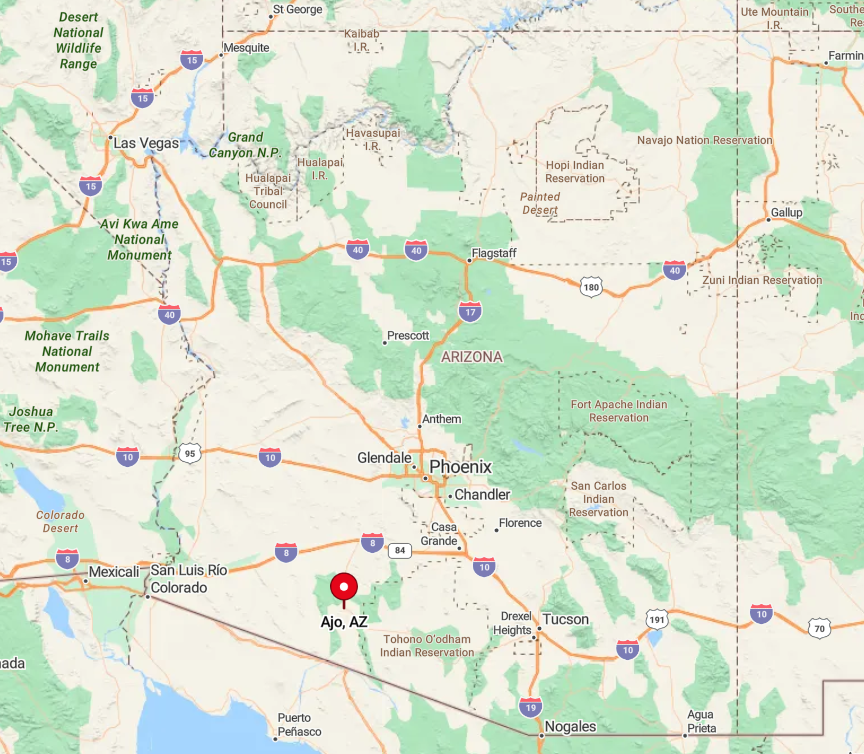
Located approximately 130 miles west of Tucson and 40 miles north of the Mexican border, Ajo sits along State Route 85 in southwestern Arizona. The town is surrounded by vast desert landscapes, characterized by towering saguaro cacti and rugged mountains. Its proximity to both Organ Pipe Cactus National Monument and Cabeza Prieta National Wildlife Refuge makes it a gateway for nature enthusiasts seeking off-the-beaten-path adventures. Travelers can reach Ajo by driving south from Interstate 8, enjoying the peaceful expanse of the desert and the clear, open skies that define this region.
8. Terlingua, Texas: The Ghost Town with a Chili Twist

Terlingua is a captivating ghost town in Texas that offers an intriguing blend of history, culture, and culinary fame. Once a thriving mercury mining community in the late 1800s, Terlingua was abandoned when the mines closed in the 1940s. Today, its rustic ruins and dilapidated buildings serve as a backdrop for artists, adventurers, and tourists seeking a unique experience. The town is perhaps best known for its annual Chili Cook-Off, a lively event that draws competitors and visitors from around the world to celebrate Texas-style chili. The Terlingua Trading Company and the Starlight Theatre provide local flavor with live music, dining, and shopping. Nestled near Big Bend National Park, Terlingua is also a haven for outdoor enthusiasts looking to explore the rugged landscapes of West Texas. Homebuyers interested in the area’s charm will find 3-4 bedroom homes ranging from $150,000 to $400,000, offering a mix of affordability and rustic allure.
Where is Terlingua, Texas?
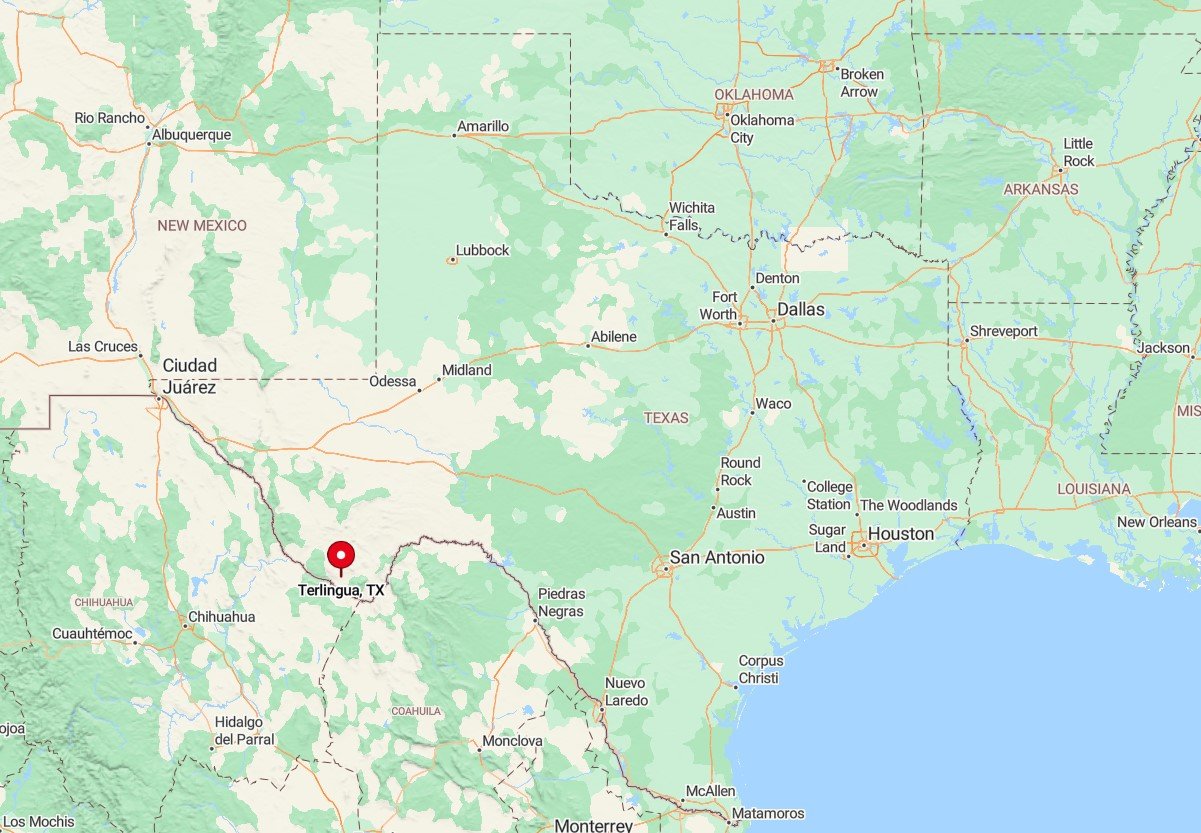
Terlingua is located in the remote southwestern corner of Texas, near the Rio Grande and the U.S.-Mexico border. It sits along State Highway 170, about 12 miles west of the entrance to Big Bend National Park. The town’s desert setting offers expansive views of the Chisos Mountains and the rugged beauty of the Chihuahuan Desert. To reach Terlingua, travelers often drive from Alpine or Marathon, enjoying scenic routes that highlight the area’s vast, untamed wilderness. Its isolation contributes to its charm, offering a true escape from the bustle of modern life.
7. Silver City, New Mexico: From Silver Boom to Cultural Bloom

Silver City, perched on the edge of the Gila National Forest, is a town that has gracefully transitioned from a booming mining center to a vibrant cultural hub. Founded in the 1870s following the discovery of silver ore, the town’s wealth is reflected in the beautifully preserved Victorian-era buildings that line its historic downtown. Today, these structures house art galleries, boutiques, and eateries that showcase the creative spirit of the community. The Silver City Museum offers insights into the town’s rich history, including its mining roots and diverse cultural heritage. Annual events like the Silver City Blues Festival and the Clay Festival attract artists and visitors, enhancing the town’s reputation as a center for the arts. With easy access to outdoor adventures in the nearby wilderness, Silver City offers a blend of culture and nature. With 3-4 bedroom homes available for $200,000 to $400,000, Silver City combines cultural vibrancy with attractive housing options.
Where is Silver City, New Mexico?

Silver City is located in southwestern New Mexico, approximately 60 miles north of the U.S.-Mexico border and 150 miles east of Tucson, Arizona. The town is nestled at the foot of the scenic Mogollon Mountains, providing a backdrop of towering pines and rugged terrain. Accessible via U.S. Highway 180 and State Highway 90, Silver City serves as a gateway to the Gila National Forest and Gila Cliff Dwellings National Monument. Travelers can enjoy picturesque drives through the rolling hills and mesas that define the region, making the journey as rewarding as the destination.
6. Tubac, Arizona: Arizona’s Oldest European Settlement

Tubac holds the distinction of being Arizona’s oldest European settlement, founded in 1752 as a Spanish presidio. This rich heritage is evident in the town’s historical sites, including the Tubac Presidio State Historic Park, which preserves the remains of the original fort and offers museum exhibits on the area’s colonial past. Over the years, Tubac has evolved into a thriving artist colony, attracting creatives inspired by its scenic desert landscapes and storied history. The town’s charming streets are lined with galleries, studios, and shops featuring handcrafted pottery, jewelry, and fine art. Annual festivals, such as the Tubac Festival of Arts, celebrate the community’s artistic flair and draw visitors from across the region. Exploring Tubac provides a unique blend of cultural experiences, from its Spanish colonial roots to its contemporary art scene. For those looking to reside in Tubac, 3-4 bedroom homes range from $400,000 to $800,000, reflecting the town’s blend of luxury and artistic appeal.
Where is Tubac, Arizona?

Tubac is situated in southern Arizona, approximately 45 miles south of Tucson and 20 miles north of the U.S.-Mexico border. Located along Interstate 19 and the Santa Cruz River, the town is set against the backdrop of the Tumacácori and Santa Rita mountain ranges. The area’s lush cottonwood trees and riparian habitats offer a contrast to the surrounding desert, making it a picturesque destination. Visitors can reach Tubac by car via I-19, enjoying scenic views along the way, and can also explore nearby historic sites like the Tumacácori National Historical Park.
5. Marfa, Texas: A Desert Oasis of Mystery and Modern Art

Marfa, Texas, has gained international acclaim as a center for minimalist art and mysterious phenomena. This small desert town became a hub for contemporary art in the 1970s when artist Donald Judd moved there and established large-scale installations that continue to attract enthusiasts. The Chinati Foundation and numerous galleries showcase works that harmonize with the stark beauty of the surrounding landscape. Marfa is also famous for the Marfa Lights, unexplained orbs that reportedly appear on the horizon at night, intriguing visitors and sparking local legends. Beyond art and mystery, the town offers eclectic shops, stylish accommodations, and a vibrant culinary scene. Marfa’s unique blend of cultural sophistication and small-town charm creates an atmosphere unlike any other. For those captivated by its unique charm, Marfa offers 3-4 bedroom homes priced between $300,000 and $600,000.
Where is Marfa, Texas?

Located in the high desert of West Texas, Marfa sits at an elevation of 4,600 feet, roughly 200 miles southeast of El Paso. The town is accessible via U.S. Highway 90 and U.S. Highway 67, making it a crossroads for travelers exploring the expansive landscapes of the region. Surrounded by vast ranch lands and the distant peaks of the Davis Mountains, Marfa’s remote location adds to its allure. Visitors can reach Marfa by driving or by flying into nearby airports in El Paso or Midland and continuing by car, embracing the journey through the wide-open spaces that characterize West Texas.
4. Taos, New Mexico: Where Pueblo History Meets Artistic Inspiration

Taos, New Mexico, is a town rich in cultural heritage, seamlessly blending Native American history with artistic expression. At the heart of this is Taos Pueblo, a UNESCO World Heritage Site, and one of the oldest continuously inhabited communities in the United States. The multi-storied adobe structures offer a glimpse into centuries-old traditions of the Tiwa-speaking Native Americans. The town has long attracted artists drawn to its natural beauty and unique light, leading to a flourishing art scene represented in countless galleries and museums. Notable sites like the Taos Art Museum and the Harwood Museum of Art showcase works inspired by the region. Additionally, the historic Taos Plaza is a gathering place surrounded by shops and eateries that reflect the area’s Southwestern charm. Outdoor activities abound, with the nearby Sangre de Cristo Mountains offering skiing, hiking, and breathtaking views. Housing in Taos reflects its premium status, with 3-4 bedroom homes ranging from $500,000 to $1,000,000.
Where is Taos, New Mexico?

Located in northern New Mexico, Taos sits in the high desert at an elevation of approximately 7,000 feet. It’s about 70 miles north of Santa Fe and can be reached via the scenic High Road or the Rio Grande Gorge Bridge for impressive vistas. The town is nestled against the backdrop of the Sangre de Cristo Mountains, providing a striking natural setting that complements its cultural attractions. Visitors can access Taos by car via U.S. Route 64 or State Road 68, enjoying the dramatic landscapes that have inspired generations of artists and travelers alike.
3. Jerome, Arizona: The Ghost Town that Refused to Die

Perched precariously on the side of Cleopatra Hill, Jerome, Arizona, is a testament to resilience and reinvention. Once known as the “Wickedest Town in the West,” it was a booming copper mining community in the late 19th and early 20th centuries. After the mines closed, Jerome’s population dwindled to fewer than 100 residents, leaving it nearly a ghost town. In the 1960s, artists and free spirits began to repopulate the town, breathing new life into its historic buildings and creating a vibrant arts scene. Today, Jerome is a quirky enclave filled with galleries, boutiques, and eateries that celebrate its storied past. Visitors can explore the Jerome State Historic Park and Mine Museum to learn about its mining heritage, or simply meander the steep streets for panoramic views of the Verde Valley. Those interested in Jerome’s artistic charm will find 3-4 bedroom homes priced between $400,000 and $700,000.
Where is Jerome, Arizona?

Jerome is located in central Arizona, approximately 100 miles north of Phoenix and 50 miles south of Flagstaff. The town is accessible via State Route 89A, a scenic highway that winds through red rock canyons and mountainous terrain. Situated at an elevation of over 5,000 feet, Jerome offers cooler temperatures and sweeping vistas of the surrounding landscape. Travelers can reach Jerome by car, enjoying the picturesque drive that is as much a part of the experience as visiting the town itself.
2. Mesilla, New Mexico: Stepping Back into the Old West

Mesilla, New Mexico, is a charming village that offers an authentic glimpse into the Old West with its well-preserved adobe architecture and storied past. Founded in the mid-19th century, Mesilla was once the largest city between San Antonio and San Diego, playing a significant role in the region’s history. The focal point of the town is the historic Mesilla Plaza, a National Historic Landmark surrounded by buildings dating back over 150 years. One of the notable sites is the old courthouse where the infamous outlaw Billy the Kid was tried and sentenced to hang. Today, the plaza hosts cultural events, markets, and festivals that celebrate the town’s rich heritage. Visitors can explore local shops, galleries, and restaurants that showcase traditional Southwestern crafts and cuisine. With 3-4 bedroom homes ranging from $450,000 to $1,200,000, Mesilla offers a mix of historic charm and upscale living.
Where is Mesilla, New Mexico?

Mesilla is located in southern New Mexico, adjacent to the city of Las Cruces and approximately 45 miles north of El Paso, Texas. The village is easily accessible via Interstate 10, making it a convenient stop for travelers exploring the Southwest. Nestled in the Mesilla Valley along the Rio Grande, the area is known for its fertile agricultural land and picturesque vineyards. Visitors can enjoy the scenic beauty of the Organ Mountains to the east and take leisurely drives through the surrounding countryside dotted with pecan orchards and wineries.
1. Bisbee, Arizona: A Copper Mining Town Turned Artsy Haven

Nestled in the Mule Mountains of southern Arizona, Bisbee is a town that beautifully merges its rich mining heritage with a vibrant artistic spirit. Once one of the largest copper and gold producers in the world, Bisbee’s steep hillsides are lined with historic buildings that harken back to its prosperous past. After the mines closed in the 1970s, artists and retirees discovered Bisbee’s charm, transforming it into a haven for creativity and culture. The town’s unique architecture features Victorian-style homes and storefronts that now house galleries, boutiques, and cafés. Visitors can delve into the mining history with a tour of the Queen Mine, descending into the shafts where miners once toiled. Events like the Bisbee 1000 Stair Climb and a lively music scene add to the town’s eclectic atmosphere. For those seeking affordable housing, 3-4 bedroom homes in Bisbee range from $200,000 to $400,000.
Where is Bisbee, Arizona?

Bisbee is located in southeastern Arizona, about 90 miles southeast of Tucson and just a few miles north of the U.S.-Mexico border. The town is accessible via State Route 80, which offers scenic views of the mountainous terrain. Bisbee’s elevation at over 5,500 feet provides milder temperatures compared to the surrounding desert, making it a pleasant destination year-round. Travelers can reach Bisbee by car, enjoying a drive through picturesque landscapes that highlight the diverse beauty of Arizona’s countryside.






